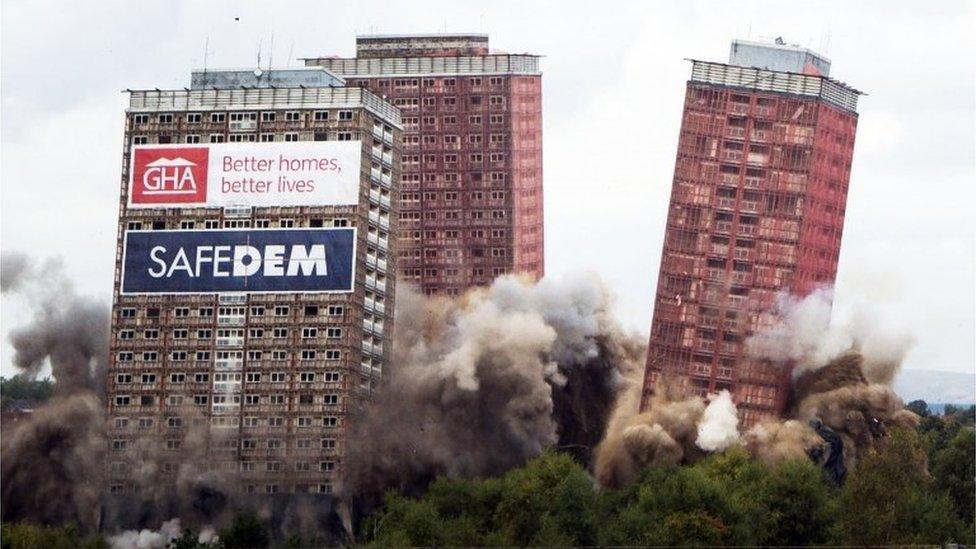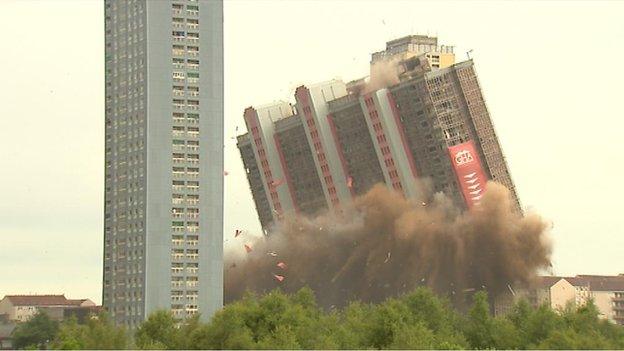Exclusion zone lifted after Red Road flats demolition
- Published
How Glasgow's Red Road towers tumbled in 2015, 2013 and 2012
Thousands of residents have been allowed home several hours after attempts to demolish Glasgow's Red Road flats.
A controlled explosion was intended to bring down the six remaining tower blocks.
But substantial parts of two of the buildings remained in place.
About 2,500 residents from nearby properties were kept outside the exclusion zone until safety checks were made.
Shortly before nightfall, they were allowed to return to their properties.
Glasgow Housing Association (GHA) said no new exclusion zone was planned for Monday.
Before the operation, some of those being evacuated from the exclusion zone had voiced their concerns about the risk to their homes.
A small number had to be forced out by sheriff officers accompanied by police.
Games plan
A controversial plan to demolish five of the blocks as part of the Commonwealth Games opening ceremony last summer was dropped.
When built they were considered the answer to the city's housing problem but became rundown and vandalised.
Glasgow Housing Association (GHA) said a single blowdown would be less disruptive to local residents.

Thousands of people gathered to watch the buildings come down

Explosive charges were triggered in all six of the tower blocks

The buildings started to fall according to plan

As the dust settled, it became clear that a substantial part of two blocks remained standing
Members of the public were kept about 1,000ft (300m) away from the blocks.
About 1,000 households were due to be temporarily moved while the demolition took place.
Speaking on BBC Radio Scotland's Good Morning Scotland programme before the blast Tina Suffredini, who lives in the exclusion zone and was refusing to leave, said she wanted the block to be levelled gradually to lessen the impact on the surrounding area.
"I am concerned about everything," she said.
"Gas mains, there's a petrol station a couple of hundred yards away from the triple block, there's a nursery right under it, the dust, the flying debris - anything could happen.
"It could be two years down the line and our foundations could start to crack. I want to see them taken down safely, bit by bit."
Built in the mid-1960s to tackle the city's housing crisis, the flats were once the tallest residential structures in Europe, providing accommodation for almost 5,000 people.
The demolition programme, which changes the city's skyline, is part of GHA's renewal plan.
Two previous demolitions have taken place, in 2012 and 2013.
GHA said the decision to take all six blocks down in a single demolition was taken following feedback from local residents.
It said it would hold consultations on development options for the site.
- Published11 October 2015

- Published10 October 2015

- Published3 August 2015

- Published13 April 2014

- Published14 April 2014

- Published10 June 2012

- Published11 June 2012

- Published11 June 2012
